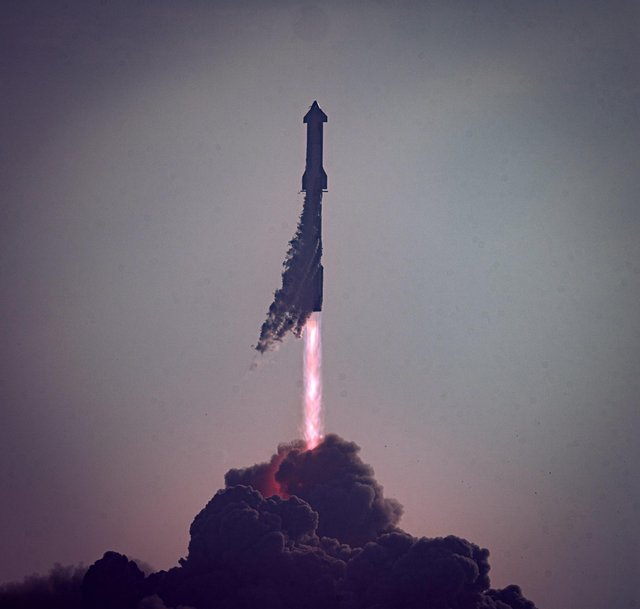
Starship's first orbital launch finally ended in an explosion, but the spectators in the United States were still excited, cheering and clapping. The hosts in the live broadcast were talking and laughing, filled with enthusiasm. SpaceX humorously tweeted that it was an unplanned disassembly. Elon Musk was even more delighted, stating that they had accumulated experience for the next launch.
Some people might find it strange. Shouldn't a launch failure be sad? Why are they all cheering? This is where Elon Musk excels; he had lowered expectations, saying he couldn't guarantee success but that it would definitely be exciting. So in my opinion, if the launch pad wasn't destroyed, it would have been a success by meeting expectations. If it had managed to leave the launch pad by 100 meters before exploding, it would have been a great success. If it had landed in the Gulf of Mexico or Hawaii and exploded, it would have been a milestone success. This time, the explosion at 32 kilometers high set a new record for Starship launches, so it can be considered a successful failure.
The Starship could become the most important invention in the history of interstellar civilization. Remember, I'm using the term "interstellar civilization," not "human civilization." We'll talk about that later. How did Musk come up with the idea of building the Starship? It all started with a humiliating experience when he was mocked and spat on by Russians, which triggered Musk's furious revenge campaign.
Cameron Tricks Musk into Investing in His Film
In June 2001, the Mars Society, a nonprofit organization in the United States, held a fundraising dinner to discuss plans for Mars colonization. The tickets cost $500, and they eagerly sent out invitations to many celebrities. However, no one responded to their invitations. Just when the dinner seemed doomed, a member came in with a check, out of breath, saying that a guy named Musk had signed up and sent $5,000.
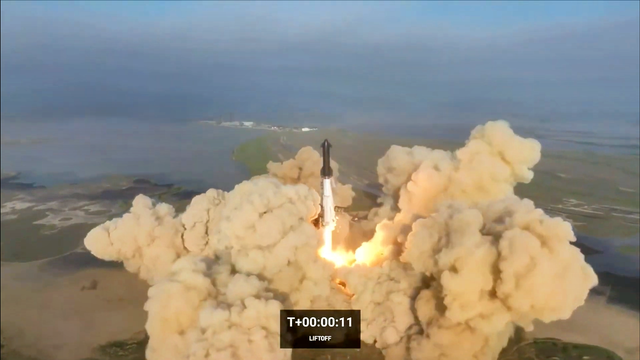
Wow! The Mars Society members quickly searched online and discovered that Musk was a young millionaire with some fame on the Internet. Musk had been fascinated by Mars since childhood, and two years earlier, he had sold his first company, Zip2, for $370 million. Seeing that there was a group of people planning to colonize Mars, he eagerly signed up.
The Mars Society was thrilled, finally finding a savior in Musk. They began promoting the fact that Musk had sent $5,000, which attracted many more participants, including the famous director James Cameron. The two became more excited as they chatted during the dinner. Cameron convinced Musk to invest in his film, and Musk immediately donated another $100,000 to the Mars Society. Musk then established the Mars Oasis project, preparing to embark on a great journey to make humans a multi-planetary species.
Musk then began looking for people who could connect him with Russia. Why Russia? Because he wanted to buy rockets. Why Russian rockets? Because they were cheaper than American ones. What did he want the rockets for? That leads us to the Mars Oasis project. Musk wanted to send a greenhouse to Mars to see if plants could grow there, starting with supplies before the troops.
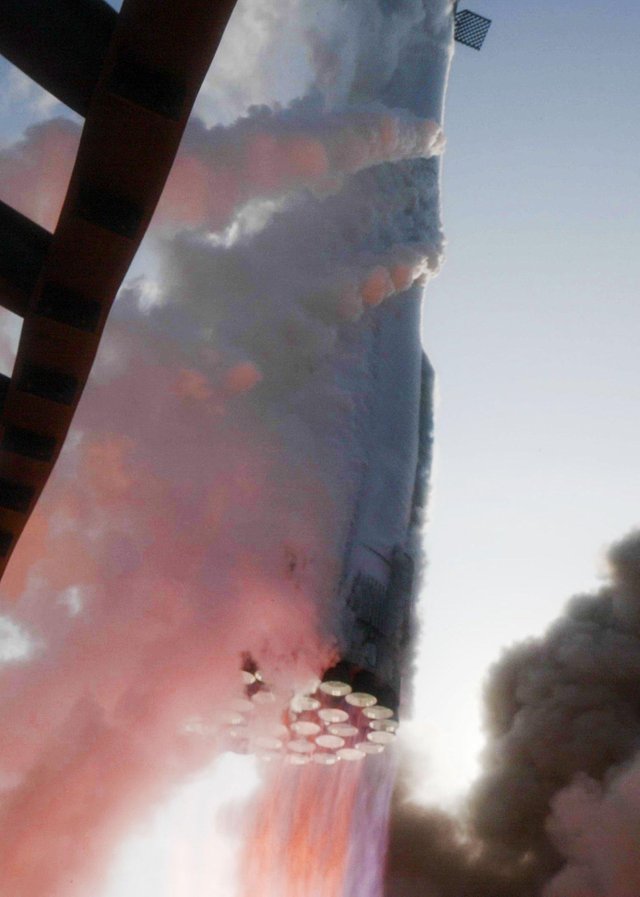
He soon connected with Jim Cantrell, a former American government worker who was once arrested in Russia for alleged spying. After Al Gore negotiated his release, Cantrell vowed never to return to Russia or deal with Russians again.
In July 2001, Musk called Cantrell, who was driving in the sweltering heat of Utah. Musk introduced himself as a billionaire and asked if they could meet to discuss a space program. Fearing that he was being targeted by spies again, Cantrell hesitated but finally agreed to meet Musk at the Salt Lake City Airport, thinking it would be a safer location due to security checks.Musk eventually persuaded Cantrell to go to Moscow with him.
Musk Gets Spit on by Russians
In October of that year, Musk and his team went to Moscow, ready to buy three Russian ballistic missiles modified as rockets. Look at their strong execution! In just four months, they were working tirelessly, and it would be unfair if Musk wasn't the world's richest man. Musk found Kosmotras, a Ukrainian-Russian joint venture specializing in the modification and manufacturing of Dnepr rockets. After a heavy round of vodka with the Russians, they said they'd sell one for $8 million. Musk countered with an offer of $20 million for three. The Russians ridiculed him and even spat on his shoes, possibly because Musk was dressed casually and offended them, or because they didn't believe a private enterprise could succeed in the space industry.
Furious, Musk stormed out of the meeting room without purchasing a single rocket, called a taxi, and headed straight to the airport. Mid-flight, he made a decision that would later infuriate the Russians: he would build his own rocket.
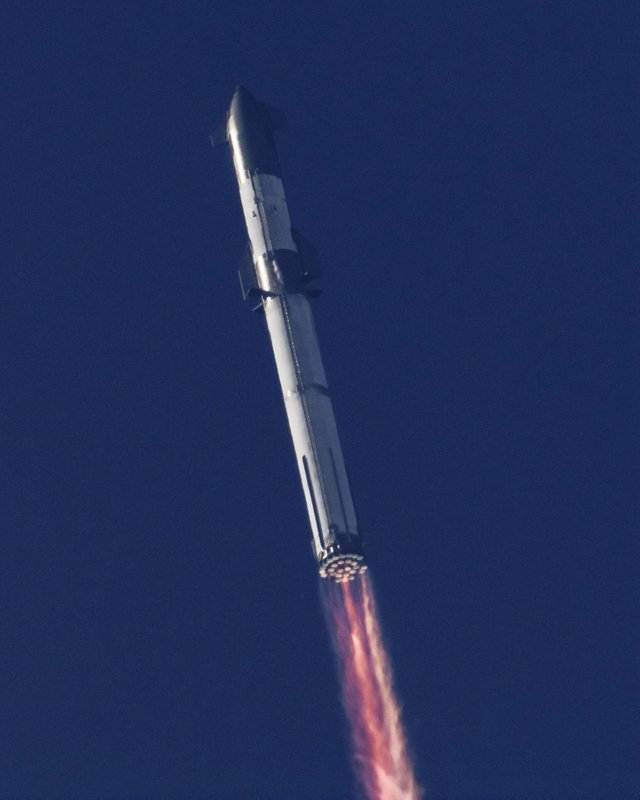
At the time, Lori Garver, who later became the Deputy Administrator of NASA, was also furious. She had organized a private spaceflight program, allowing civilians to receive training in Russia's Star City and travel to the International Space Station on Soyuz spacecraft. She originally planned to go to space herself, but when singer Lance Bass outbid her, the Russians, seeing dollar signs, chose him instead. However, Bass's finances later became problematic, and in the end, no one went.
Garver also had a grudge against the Russians. In the summer of 2002, she and Musk discussed their dependence on Russia. Garver later pushed for the commercialization of space during her tenure as Deputy Administrator of NASA under the Obama administration, aiming to deal a devastating blow to Russia.
Falcon 9 Delivers a Fatal Blow to Russia
The familiar story began in 2002 when Elon Musk sold his co-founded company, PayPal, for $1.5 billion and established SpaceX. Through a partnership between the government and the private sector, it took over a decade to develop the Falcon 9 into the world's safest and only reusable rocket, capturing all of Russia's space business. Musk's retaliation took more than ten years, but the Russians can't complain.
As of today, the Falcon 9 rocket has been launched 222 times, recovered 184 times, and only experienced a half-failure in its early stages, making it the only launch vehicle in the world with a success rate exceeding 99%. With just over 30 rockets, it has delivered two to three thousand tons of payload to space, accounting for nearly all global commercial launches, and counting profits until its hands are sore. The Russians are crying in the restroom, thinking about the consequences of that mouthful of spit and the unwavering $4 million.
What's even more frustrating for the Russians is that the Falcon 9 is just Musk's testing ground. He has always wanted to develop a more powerful, cost-effective rocket capable of traveling to Mars and serving as an interplanetary logistics vessel for routine transportation between Earth and Mars. Of course, the Russians may not be too frustrated, as they might not understand the significance, and as long as there is vodka, they'll be satisfied.
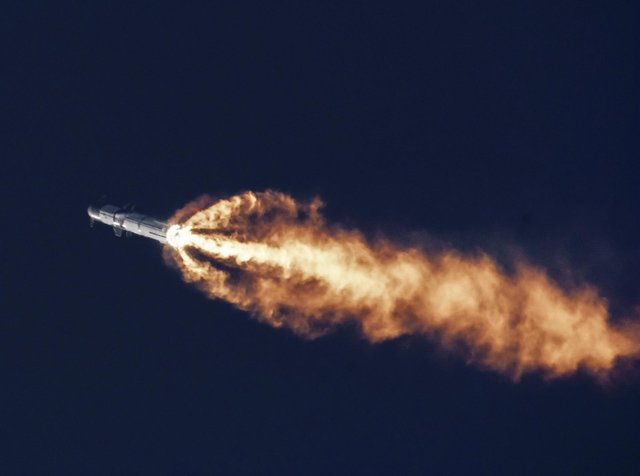
Starship: Interplanetary Logistics Vehicle
The Starship is the future interplanetary logistics and passenger transportation tool, SpaceX's next-generation fully reusable spacecraft, soon to become a genuine spaceship capable of taking humans to interplanetary space. From start to finish, it is filled with technology and dreams. Every inch of steel is the crystallization of the engineers' hard work, and every innovation demonstrates SpaceX's confidence in the future.
The entire Starship system stands 120 meters tall, like a small skyscraper that can fly. It is comprised of a 70-meter high Super Heavy booster and a 50-meter high Starship stack. The booster weighs 220 tons and can hold nearly 4,000 tons of fuel, while the Starship weighs 120 tons and carries over 1,000 tons of fuel. With a total propellant cost of about $930,000, Musk's claim of a future launch costing just $2 million is not an exaggeration.
The Starship system's thrust is immensely powerful, with 33 Raptor engines generating a total thrust of 7,590 tons, 2.2 times the power of the historic Saturn V moon rocket. The entire 5,400-ton system can easily lift off the ground and carry 150 tons of payload to Earth orbit or, after refueling in space, transport 100 people to Mars. Even more amazing is the use of recycling technology in both stages of the Starship. After the booster returns to the launch tower, it can immediately prepare for the next launch, potentially reaching up to three launches per day, significantly reducing the cost of space exploration and making interstellar travel within reach. Without recovering the booster, the Starship could deliver up to 250 tons of payload to orbit.
There are several variations of the Starship for different missions, including those returning to Earth and landing on Mars, which require a new thermal protection system due to atmospheric entry. Starship's fuel consists of methane and liquid oxygen because they can be easily manufactured from water and carbon dioxide on Mars, providing a continuous supply of energy for interstellar exploration. Mars' low gravity also enables the Starship to take off and leave Martian orbit without a booster.
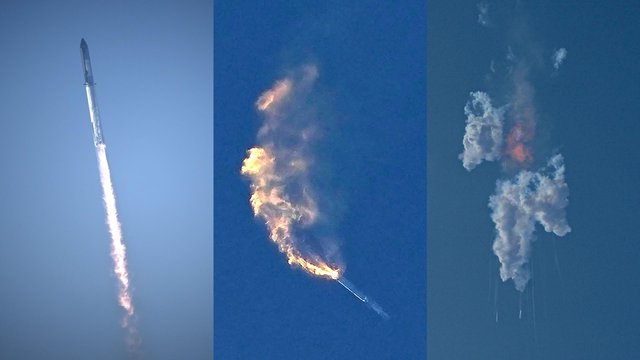
Another thing many people may not yet believe is that the Starship aims to achieve airline-level safety. In the future, it will conduct flights into space and return to Earth, shortening the travel time between New York and Shanghai to just 30 minutes, realizing ultra-fast transportation, and offering breathtaking views of Earth's curvature along the way.
Why Has the Starship Developed So Fast?
The Starship was officially announced in 2017 and is expected to launch in just under six years. Why has it developed so quickly? In addition to the foundation laid by the Falcon 9, the development of the Starship has adopted an internet thinking model, refining the design through a series of prototype tests. This approach, called "rapid iteration," allows for extremely fast design and development completion, followed by immediate mass production. Currently, the Starship prototype has gone through 31 iterations, while the Super Heavy booster has gone through 11. The first orbital flight will be a combination of S24 and B7, with at least four more Starships and three boosters awaiting orbital flight testing.
In just 20 short years, Musk has accidentally become the world's richest person and avenged the humiliation of being spat on two decades ago. Russia's annual space budget is now just over $1 billion, which may not even match SpaceX's revenue, as Musk has thoroughly trampled them. The reason behind this success is his adoption of the rapid iteration model, which businesses can learn from.
Of course, Musk's position as the world's richest person is not very stable, as the top spot constantly changes hands. However, once the Starship test flight is successful, it is easy to imagine that Musk will leave the competition in the dust as the world's richest person and may even soon become the first trillionaire in human history.
Musk's Darkest Moment
Although Elon Musk has achieved great success, he also experienced some of the darkest moments in his career. For more than 10 years before the Falcon 9 became reusable, nobody except Musk believed that rockets could be recovered, or that private companies could succeed in the space industry without national support. As a result, Musk faced countless ridicule and criticism. People mocked him for being overly ambitious, even giving him the nickname "Space Madman."
In 2006, SpaceX was running out of money, and Musk invested another $100 million into the company. The media was relentless in their mockery, convinced that his investment would be a waste. After the third failed launch of the Falcon 1 in 2008, Musk reassured his employees and told the media that they would quickly attempt a fourth and fifth launch, and that the sixth rocket was already in production. However, in reality, he was financially drained and didn't have the funds for a fifth launch. The fourth launch was a do-or-die situation. To make it happen, Musk raised money from everywhere he could, and even his employees invested their own money, knowing they might never see it again.
Misfortune seemed to follow Musk, as the global financial crisis put his other company, Tesla, in a difficult position. Struggling to secure financing, Musk had to sell his private jet to fund Tesla. Musk considers 2008 the most painful year of his life. If the Falcon 1 had failed one more time, SpaceX would have gone bankrupt. Fortunately, the fourth launch was successful, allowing both SpaceX and Tesla to survive and eventually thrive.
In 2008, after the successful fourth launch of Falcon 1, NASA signed a $1.6 billion commercial resupply contract with SpaceX. People mocked NASA, too, accusing them of preparing to use a non-existent rocket for resupply and calling the contract foolish. In 2013, SpaceX successfully launched the SES-8 satellite, marking the first time a private company sent a satellite to geostationary orbit. Some members of the United Launch Alliance, formed by Lockheed and Boeing, considered this absurd and impossible due to the need for large rockets and specialized knowledge. They even suggested prosecuting Musk for fraud.
On December 21, 2015, the Falcon 9 successfully landed for the first time in history, recovering a rocket without relying on gravity. Despite this achievement, Musk still faced ridicule. Critics claimed it was just a publicity stunt and that SpaceX would never make money.
As for the popular belief that Tesla's Shanghai factory saved Musk, it is not entirely accurate. Both SpaceX and Tesla were already in a stable growth stage, with strong market confidence and capital. While the Shanghai factory certainly added a strategic advantage for Tesla, it was not the sole reason for the companies' success.
The Starship: Possibly the Most Important Invention in Interstellar Civilization History
I mentioned earlier that the Starship might become the most important invention in interstellar civilization history. To understand this, let's look at the big picture. Earth was once an inorganic world until organic life began with single-celled organisms about 3.5 billion years ago. These organisms consumed energy to evolve and eventually spread across the entire planet. The core issue in the complex process of life is that it consumes energy to build increasingly complex and mobile organisms, creating order in an increasingly chaotic universe.
Life's essence is to create order in a chaotic universe. After humans gained intelligence, this process accelerated dramatically, and Earth has become increasingly organized. Life will inevitably spread to other parts of the universe, and human civilization will soon become an interstellar civilization. This is determined by the expansionary nature of life, and nothing can change it unless all humans are extinct.
To spread throughout the universe, humans need tools. On Earth, we have used horses, cars, and airplanes for transportation and expansion. In space, we will need spacecraft like the Starship for interstellar travel. While we cannot predict the full capabilities of future spacecraft, the Starship represents the most promising and, albeit primitive, first step for humanity to venture into deep space. This is why I argue that it may be the most important invention in the history of interstellar civilization.
In this regard, we may owe some gratitude to the Russians for not selling their rockets to Musk. Had they sold the rockets for $20 million, human civilization might have taken a different path, or at least been delayed in reaching our current trajectory. A mere $4 million difference in price may have completely changed the course of Earth's life and evolution.
The story may seem amusing or reminiscent of childhood games. After being ridiculed, insulted, and spat upon, Musk persisted and eventually overtook his competitors. Now, his companies dominate their respective industries, leaving his critics far behind.
Additionally, it's worth noting that Earth began with inorganic matter, which couldn't spread order on its own. Organic matter emerged to carry out this task, and as a result, life proliferated. Both organic and inorganic matter serve the same purpose: to spread order. With the advent of artificial intelligence like ChatGPT, the distinction between organic and inorganic matter may become irrelevant. Entire spacecraft could become living entities, and the term "interstellar civilization" may soon apply beyond just humans.
In conclusion, although the recent Starship launch failed, human civilization has already reached a point where spreading beyond Earth to other planets is inevitable. This expansion is written in our DNA and is a fundamental aspect of life. The greatest moment in the 4.5 billion-year history of life on Earth is fast approaching, as life ventures beyond our planet to the vast expanse of the universe, embarking on the interstellar chapter of human civilization.
We are all witnesses to this remarkable journey, and it is truly an honor to be part of it.